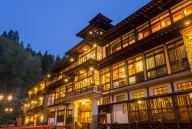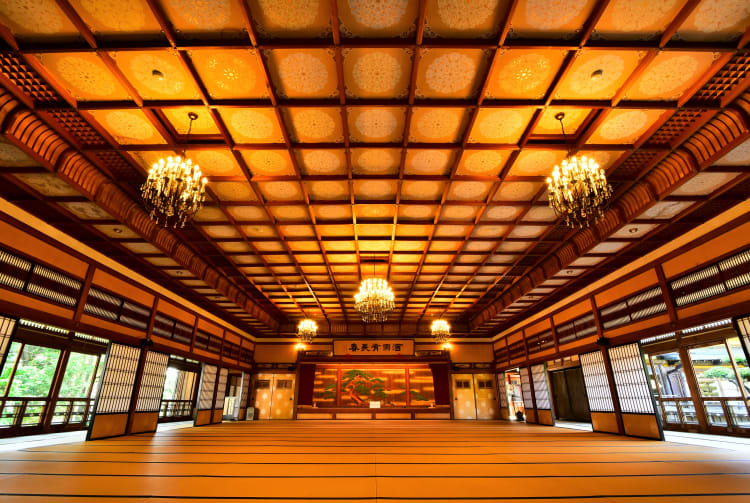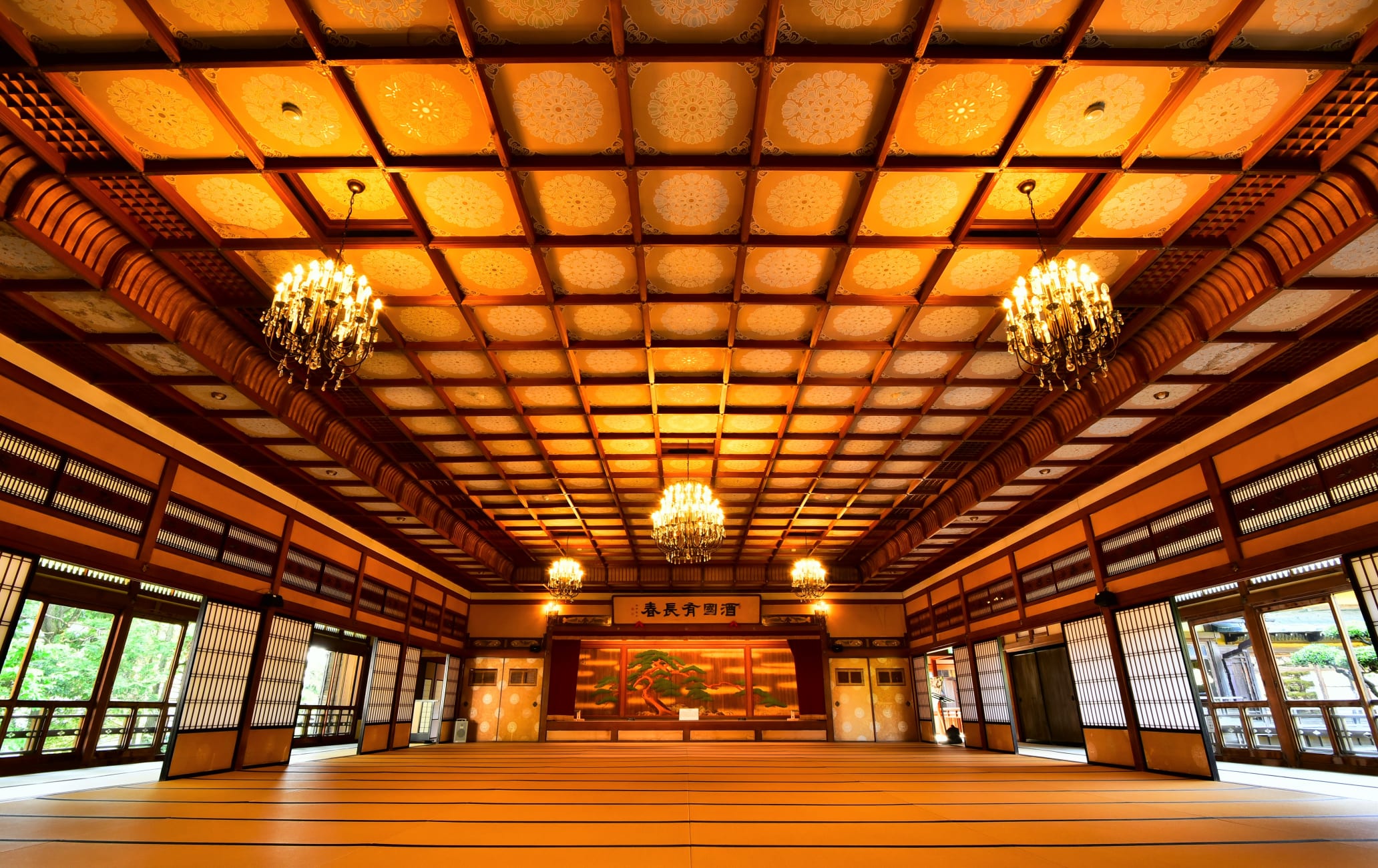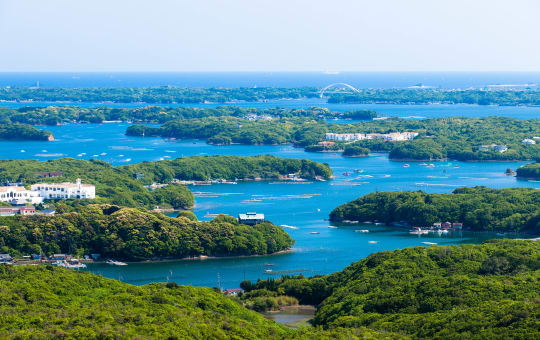Ein prachtvoller, bezaubernder kaiserlicher Ort, der jetzt der Öffentlichkeit zugänglich ist
In der Nähe von dem Ise-jingu-Schrein und den berühmten Meoto Iwa , auch als „Verheiratete Felsen“ bekannt, ist Hinjitsukan eine wunderbar erhaltene Unterkunft, die einst als Sommerresidenz der kaiserlichen Familie diente.
Nicht verpassen
- Die wunderbar erhaltenen Räume und überdachten Wege
- Sorgfältig angelegte Landschaftsgärten, die denen vor über 100 Jahren ähneln
- Einblicke in die Auswirkungen westlicher Einflüsse auf Kultur und Design während der Modernisierung Japans
Kurzinfo
Das Gebäude wurde im Jahr 1887 fertiggestellt
Der Saal ist ein hervorragendes Beispiel der Shoin-Architektur, die während der Momoyama-Zeit (1573–1603) weitverbreitet war
Anfahrt
Sie erreichen Hinjitsukan mit dem Zug aus Ise.
Die JR Sangu Line bringt Sie vom Bahnhof Iseshi zum Bahnhof Futaminoura in etwas mehr als fünf Minuten. Von dort aus ist es ein landschaftlich schöner Spaziergang von einem Kilometer, für den Sie ungefähr 15 Minuten benötigen.
Sie erreichen den Bahnhof Iseshi mit der Kintetsu-Eisenbahnlinie vom Bahnhof Nagoya aus in circa 90 Minuten, vom Bahnhof Osaka-Namba aus in zwei Stunden und vom Bahnhof Kyoto aus in zweieinhalb Stunden.
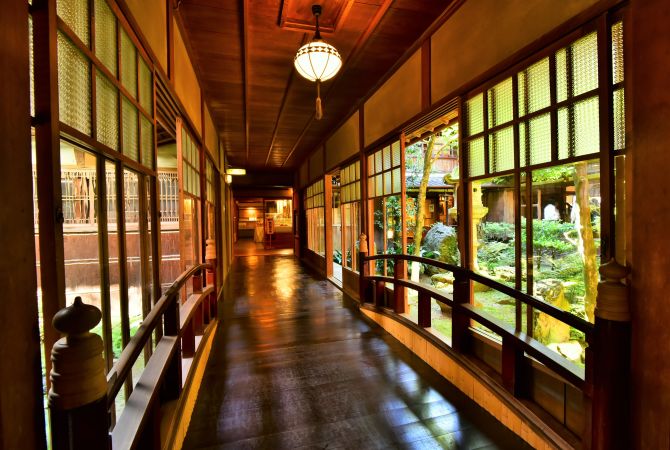
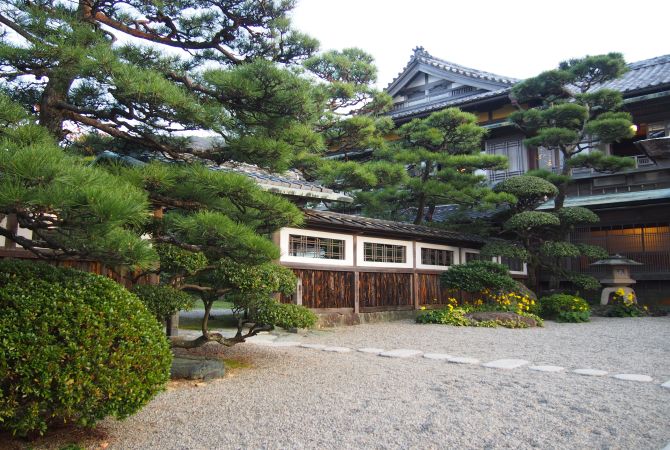
Exklusive Unterkünfte
Hinjitsukan war einst ein Gästehaus für die Elite, das Mitgliedern der kaiserlichen Familie und reichen Besuchern vorbehalten war, wenn diese die Gegend besuchten, um im Ise-jingu-Schrein zu beten, oder entspannen wollten.

Im späten 19. Jahrhundert, nach dem Sturz des Tokugawa-Shogunats, wurden die zumeist aus Holz bestehenden Gebäude mit den hochwertigsten Materialien, die zur Verfügung standen, aufwendig erbaut. Bis zur Fertigstellung dauerte es nur drei Monate, spätere Anbauten nicht mit einberechnet.

Heute wird Hinjitsukan von Besuchern wegen der gut erhaltenen Architektur und der wundervollen Landschaftsgestaltung bewundert. Die japanischen Gärten wurden besonders gut gepflegt und sind daher in einem ausgezeichneten Zustand.
Ein Museum im Wandel der Zeit
Das ehemalige, zweistöckige Gästehaus ist mittlerweile ein Museum für Architektur und Innenarchitektur aus dem späten 19. Jahrhundert, das hochwertiges japanisches Kunsthandwerk und luxuriöse Importe zeigt.
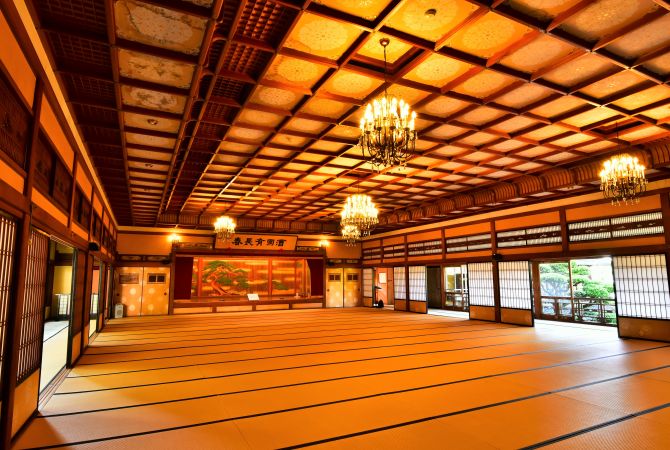
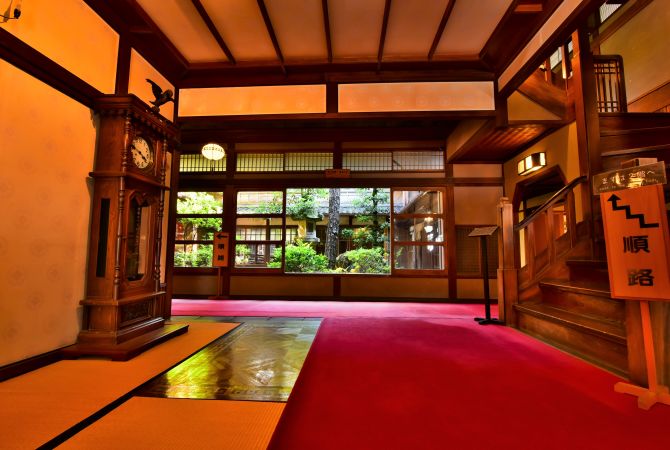
Zwischen traditionellen japanischen Dekor wie bemalte Paravents und Tatami-Matten werden Sie in der Einrichtung Hinweise auf westliche Einflüsse entdecken. Sie sind ein sichtbares Zeugnis des Wunsches Japans während der Meiji-Ära, sich europäischen Vorstellungen anzunähern und diese zu übernehmen.































